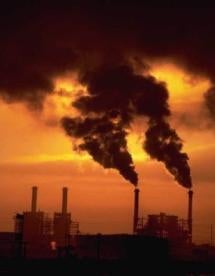India is home to 13 of the 20 most polluted cities in the world as documented by the World Health Organization (WHO). Half of Delhi’s 4.4 million children have permanent lung damage that they will never fully recover from. The 2017 State of Global Air report, published by the Health Effects Institute, shows that air pollution-related deaths in Indian between 1990 and 2015 rose by almost 150%. More simply, today in India 14.7 people in every 100,000 die of an o-zone related illness. The figure is 5.9 people in every 100,000 in China, which is frequently maligned for its record on air pollution. In her first trade trip as UK Prime Minister, Theresa May’s visit to India in November 2016 attracted a number of headlines, some of which claiming that her short trip to Delhi had a similar effect on her life as smoking 60 cigarettes on account of the levels of pollution being 15 times over world safety limits.
The issue of air pollution in India is as complex and diverse as the country itself. Broadly speaking, tackling air pollution in India is not merely a case of Indian Government-led policy-making that is both incentivizing and punitive for businesses and individuals when considering the environment. A significant contributing factor to the pollution problem in Indian is poverty-driven pollution. Around a quarter of the 1.6 billion people of the world that live with no access to electricity live in India and a further 300 million people in India live with “very, very limited access to electricity.” This has resulted in most of those individuals turning to inefficient sources of energy such as burning agricultural waste, firewood, and waste plastics in cities.
At the other end of the spectrum is the rapid capitalizing and expansion of Indian cities’ infrastructures that seek to keep pace with the speed at which Indian industry is advancing. Traffic congestion is the oft-quoted example of this and a number of initiatives have been proposed by the Indian Government that aim to ease congestion by disincentivizing the use of private vehicles through higher congestion taxes and investment in flyovers and dedicated bus lanes that could alleviate up to 50% of congestion. Late last year, while pollutant levels were at a high in Delhi, the Delhi Chief Minister announced emergency measures aimed at protecting Delhi residents from air pollution. These measures included a five-day ban on construction and demolition and a 10-day ban on operations for a coal-power station just south of Delhi. These initiatives, while well-intended, are often either knee-jerk reactions to drastic developments or they are hamstrung by political bureaucracy, which can be a significant delaying factor for effective implementation.
At the same time, Indian government policy can work counter to the fight against air pollution. Take, for instance, Indian government policy subsidizing diesel in an attempt to gain favor with farmers who rely on it to power water pumps and tractors. This initiative encouraged a significant shift in the Indian vehicle market and helped see the proportion of new cars with diesel engines rise from on in 20 cars to one in two between 2000 and 2013. This policy was then scrapped in 2014, and sales of diesel vehicles have already dropped.
There is an increasing drive to supplement Indian Government-led action and industry engagement with profile-raising and awareness among those most affected by air pollution, especially children. Perceptions towards air pollution are rapidly changing in India and the issue frequently appears in the public agenda. Charities and NGOs are now focusing on educating India’s future generation to better understand the effects of air pollution. One recent example of this is the work of UK-based charity Catch Your Breath India (“CYBI”). James Kitt, Director of CYBI, explains that CYBI’s aim is partnering with a network of Indian schools, Indian media, and children’s health charities to “empower India’s next generation as a force for change in the fight against air pollution.”




 i
i


